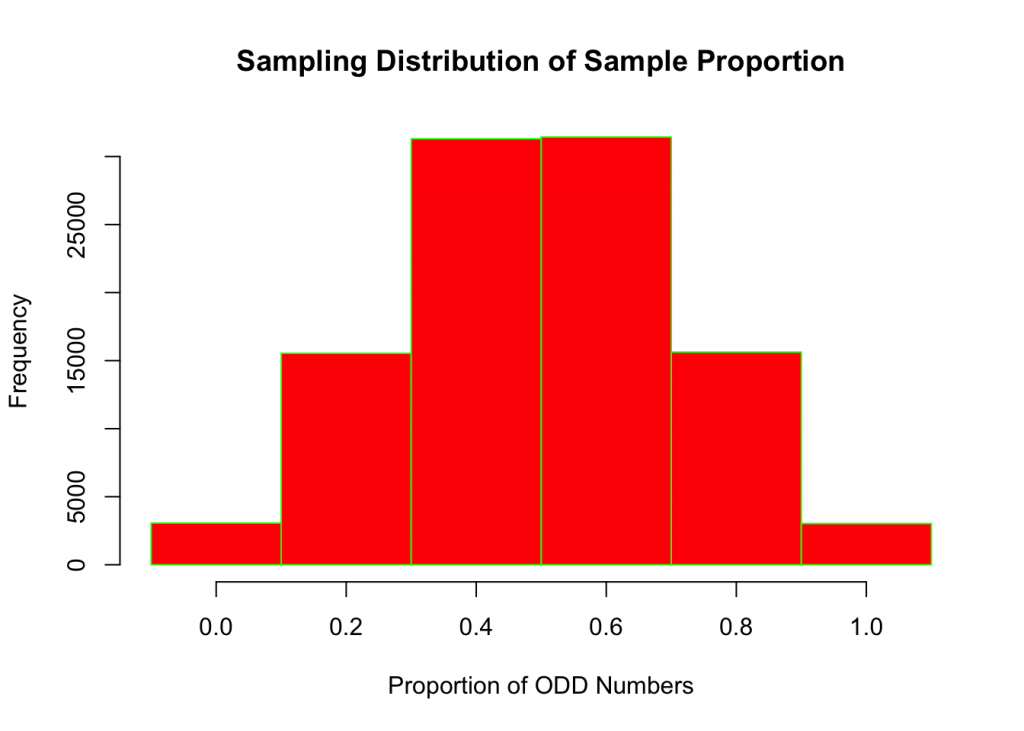Five fair dice were rolled once and the proportion of ODD outcomes was observed.
Example 1
x <-sample(1:6,5,replace = TRUE); x## [1] 5 2 2 5 4What is the proportion of ODD outcomes?
y <- x %% 2;y## [1] 1 0 0 1 0prop <-sum(y)/length(x);prop## [1] 0.4Example 2 (Simulation)
Replicate 100,000 five-dice rolls and record the proportion of ODD numbers for each roll.
five.dice <- function() {
dice <-sample(1:6,5, replace = TRUE)
return(sum(dice %% 2)/length(dice))
}
sim1 <-replicate(100000, five.dice())Here are the first six recorded proportions of ODD outcomes.
head(sim1)## [1] 0.2 0.6 0.4 0.6 0.2 1.0Table of Proportions of ODD outcomes from 100,000 simulated rolls
transform(table(sim1))## sim1 Freq
## 1 0 3065
## 2 0.2 15541
## 3 0.4 31303
## 4 0.6 31434
## 5 0.8 15626
## 6 1 3031Histogram of Proportions of ODD Outcomes
breaks <-seq(-0.1,1.1,by=0.2)
hist(sim1,breaks, col="red", border = "green",xlab="Proportion of ODD Numbers",ylab="Frequency", main = "Sampling Distribution of Sample Proportion")
Finally, the mean proportion of simulated proportions is equal to:
mean(sim1)## [1] 0.500216Ponder on the following: a) shape of the sampling distribution of the sample proportion
b) the mean proportion of the sample proportion
c) proportion of ODD outcomes when rolling a fair die once
d) writing a simulation like the one above regarding the proportion of EVEN outcomes in 100,000 rolls of five-fair dice.
Recent Comments